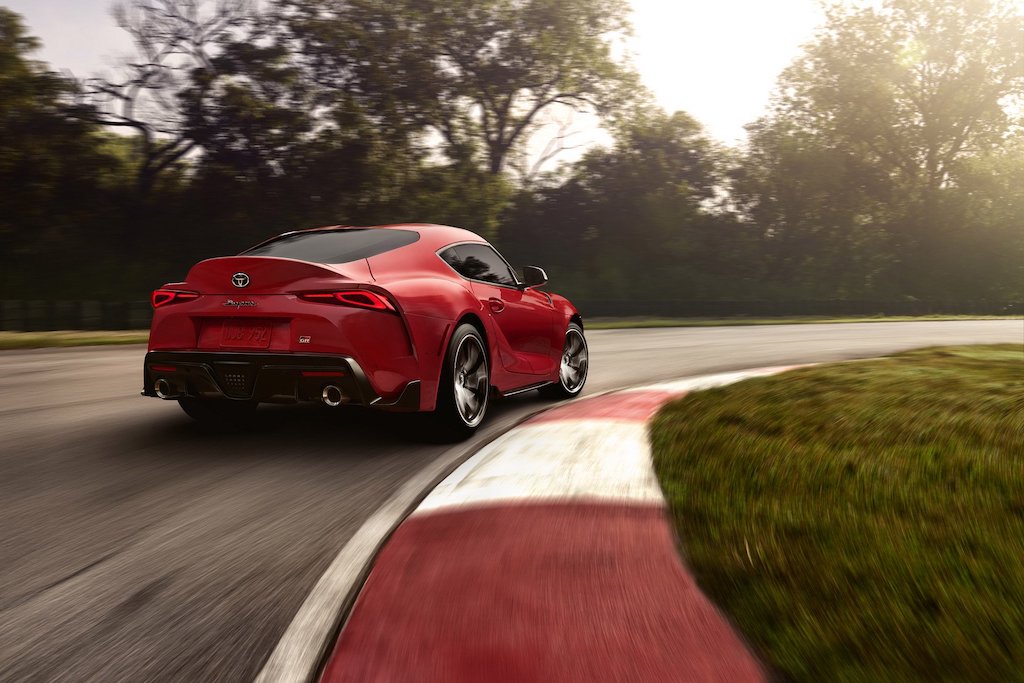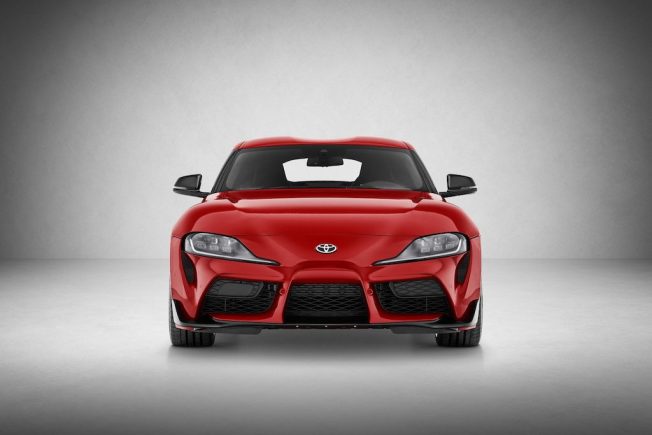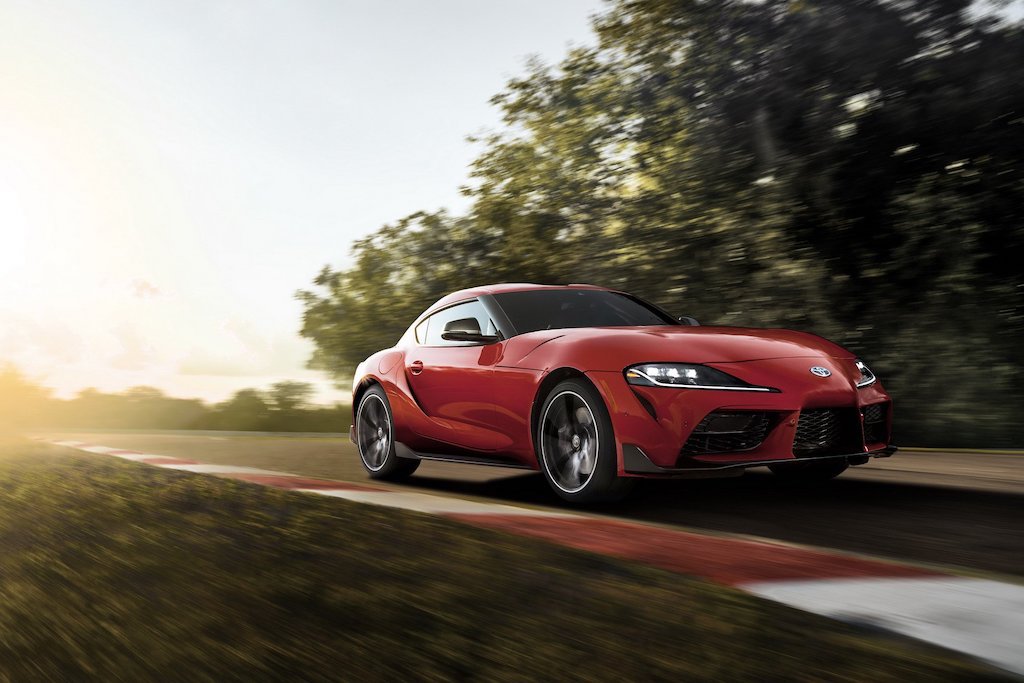The 2020 Toyota Supra makes sense, for Toyota.
The Mark V Toyota Supra has not been greeted well since its launch due to its strong BMW influence. But the question that echoes in all of us is, why? Why should Toyota, the 6th largest company in the world by revenue collaborate with BMW? The answer is pretty simple, BMW already had everything ready! Let us have a look!
A Brief Overview
Exterior

The Supra’s exterior design is Toyota. It is mainly derived from the FT-1 concept initially debuted way back in 2014. There is nothing interesting in terms of design cues in this car apart from the overload of ‘vents’ (more on that later), the odd-looking front nose design, and the flared rear wheel arches that are reminiscent of a few Ferraris. Although it might split opinions, it grows on you slowly. At least that’s what I felt.
The nicest looking part of the car is arguably the rear. Although there is a rear wing missing, the tail lights are nice looking and give a sporty look to this car overall. This is well complemented by actual exhaust pipes. But I could be skewed to this opinion because of the fact that the Supra’s reverse lights mimic the rain lights that are used in Formula One cars.
Interior
Hop inside and that’s where the collaboration really becomes one-sided here. Most of the interior elements right from the infotainment to the turn signal stalks are taken from BMW cars. In general, that’s not a bad thing at all, as BMW certainly has a better and more standardised interior than Toyota’s. The one place where Toyota did something to differentiate this from a normal BMW is in the gauge cluster. It is better than the current-gen BMW one which has the tachometer going in reverse direction. Overall, the average buyer will be certainly pleased with the 2020 Toyota Supra’s exterior and interior.
The Powertrain
Now comes the interesting part, the Supra comes with 2 engine options actually, the first one is a BMW B48 engine at a tune of about 250 horsepower. Toyota sells this engine only in Japan. The international customers get the B58B30M1 engine spec which is an inline 6-cylinder engine at a tune of 335 horsepower and 500 Nm of torque.
All of this power is channelised through an 8-speed ZF automatic gearbox that is used in many BMW models. The powertrain and transmission put off many Supra lovers, as this model doesn’t even get a manual gearbox and there could be reliability issues with some of the mechanicals.
At this point, it’s pretty obvious that the Supra is the new BMW Z4 with a different skin atop. Although this car has been tuned for handling by Toyota, almost all of the parts that make a car turn its wheels are made by the German manufacturer. Power wise, this is not a bad thing at all, as these engines are pretty good in terms of power and torque numbers, on paper.
The Car That Is Stuck In Between
This car is stuck in-between because of the fact that it wants to please the Supra fans and the average buyer at the same time. It has also been reported that several ‘vents’ of this car have been blocked out because of the fact that they were cooling the engine too much and they wanted the tuning companies to make use of them.
Now, if we are to believe that, what they are essentially saying is that they made provisions for better efficiency and cooling, but didn’t utilise it for themselves and made it for tuning companies. If Toyota were concerned about the tuning factor of these cars, they would have launched a manual option from the get-go, but they didn’t.
It is also reported that Toyota themselves were considering utilising all of these extra air vents and rear wing provisions to make a better variant of this car. This makes perfect sense, a gradual rollout of all variants of this car. This would make the car’s development a bit more sustainable. Toyota used the Supra name mainly to gain market presence. The car’s name wasn’t decided until the closing stages of development. This is important, as that means that Toyota didn’t see this coupe as a successor to the Supra when designing it.
Why need a second brand?
The answer lies in the money involved. Toyota doesn’t have an inline 6-cylinder engine to use, and BMW did. BMW was anyways going to make a BMW Z4, which is of the same category as the Supra. Toyota figured that they will collaborate with them, and carry forward the development of the car. For Toyota, this makes a lot of sense. These cars sell in fewer volumes, this means that the cost to develop a car from scratch can be recouped slowly. Toyota were able to achieve this price point because of the collaboration.
They could have pleased more hearts by making the car from the ground up, but the expense involved just doesn’t make sense for them as an organisation. Mind you, they have done this before, and it has worked great! Toyota developed the GT86 in collaboration with Subaru, who badge engineered it as the BRZ. The GT86 still sells impressive numbers for Toyota and Subaru. But the difference is that Toyota did most of the work in terms of power for the GT86. The car has received more flack than what it deserves because of its name, and that’s inevitable.
On the other hand, the 2016 Honda NSX was mediocre at best in terms of sales. Honda/Acura poured in a lot of resources in making a hybrid powertrain and a sports car only for uninspiring sales numbers. Initially, there were rumors of a hybrid Supra, but that wasn’t the case here. Toyota didn’t want to take the risk here, as in their main target markets (USA, Europe), they have a very different brand image than what they have in Japan.
Conclusion
The Mark IV Toyota Supra left behind such a legacy, that people were going to be disappointed in some way or the other. That’s just how it works out. Using legacy names is always a risk. Be it the Honda NSX, Hyundai Santro or the Toyota Supra. There will always be some discontent, as people tend to remember the success of those cars better than what it actually was.
But the Toyota Supra seems to be a good package overall, and it will sell well because of that. It was nice to see Toyota trying to please their fans by keeping the old font of the Supra, and making the car supposedly more tuning friendly, despite its BMW engine.






